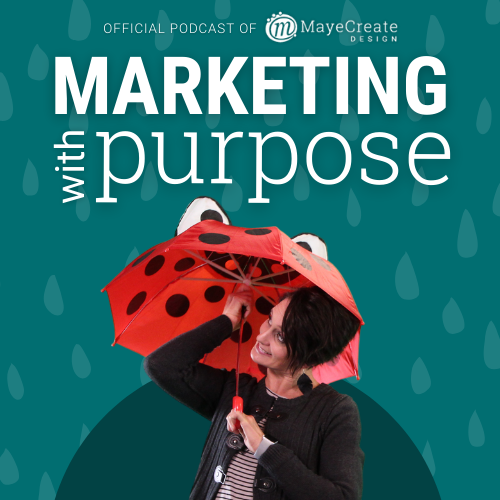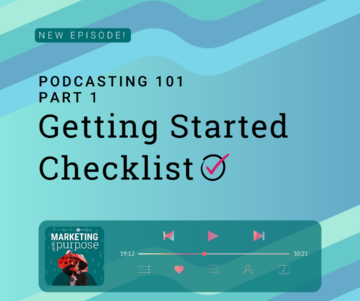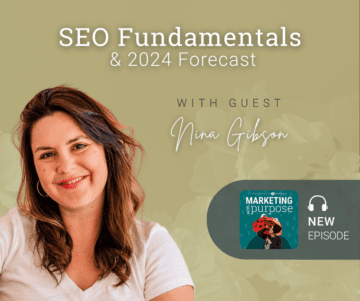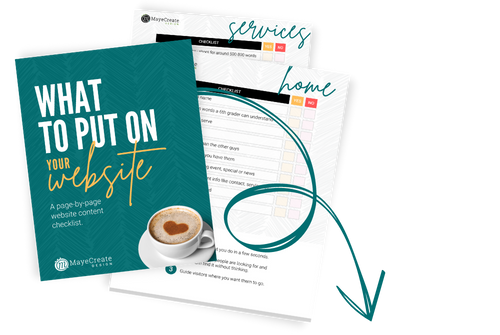The 7 Types of Web Designers
March 25, 2022

CONSUME CREATIVELY
This content is available in:
This content is available in:
AUDIO
TEXT
In the beginning when people first contact MayeCreate, we have a lot of conversations about how they’re going to build their website. Some of these people have decided they’re going with a professional agency like ours, but there are lots of different types of website developers out there.
- DIY Designers
- Student Designers
- In-House Designers
- Part-Time Freelance Designers
- Full-Time Freelance Designers
- Non-Website Focused Agencies
- Web-Focused Agencies
Each one comes with different things to consider, including
- Price
- Timeframe
- Quality
- Convenience
- Service
Going through each option, let’s define the decision-making factors. Then, you can decide which kind of designer is right for you.

1. DIY Designer
Everyone has been in a DIY stage with their business at one time or another. In this stage, you might be the web designer; using a platform you can drag and drop and build your website with minimal effort and make it look really nice.
You’ll need to do your homework to make sure you’re meeting the industry standards or exceeding them. Most people building their websites on Squarespace, Shopify or Wix are their own web developers, which comes with some pros and cons.
Price
The price tag is potentially a lot cheaper because you’re not paying an additional person.
Timeframe
Your timeframe could be a lot longer because you have to do it on your own.
Quality
If you’re using a plug-and-play system like Squarespace or Wix, they might have all the features you’ll ever need in a website to start. But the features available to a site are limited by both the developer and the software. Just make sure you’re getting what you need out of the service before you invest a bunch of energy building something in it. And unfortunately, the professionalism of the end product might be more awesome if you had someone do it who has an eye for design.
Convenience
Being your own web developer can be convenient because you know how you put your site together. After doing it for long enough, you know how to fix it or adjust it. On the other hand, if you’re busy, then it’s not convenient at all.
Service
Ask yourself, based on past experience, “How is it interacting with companies who are really, really big and provide a technology service when you need something from them?” Occasionally, you have a good experience, but 97.9% of the time, you’re dealing with someone on chat who either doesn’t know as much as you do or thinks you’re dumb. No one wants that. So service from a DIY perspective can be rough.

2. Student Designer
We live in a community flush with students because we’re in a college town. Which means a lot of people have students develop their websites for them.
Price
A lot of students will work for beer. So, cheap-ish, depending on the beer…and the student.
Timeframe
A student designer could put it together quickly, depending on how dedicated they are. Or, they could get a wild hair and just abandon ship altogether. Then you’re left with a partially completed sight, which stinks.
Quality
Students can produce beautiful work or create not awesome things. One important thing to remember is students don’t have an art director. They don’t have anyone reviewing their work and teaching them to be better.
If a student is going to design your website as part of a class project, you might get a far better product at the end than if they were just doing it on their own.
Convenience
If you have a student come in and get to know you, it can be super convenient because they can do a great job telling your story in a way somebody who isn’t there as much might not. On the other hand, they will not be nearly as fast to turn things around as many professionals would be.
Service
How many college-age people do you know who will answer a phone call? *Crickets*
While a student could do a great job building your site for you, the likelihood they will service your site long-term is nominal. Make sure if a student builds your site for you, they build it on a platform well-supported by freelancers or agencies.

3. In-House Designer
Few people need an in-house designer or full-time web developer. Odds are pretty good you don’t need one either. Most companies we work with have someone who can update their website but not physically build a new one.
Price
The price tag of an in-house web designer is pretty steep because you’re paying a salary for a full-time person.
Timeframe
We work with a lot of people who have an in-house marketing person who isn’t necessarily a web developer, and we give them the shell and then they run with it.
Then you get the best of both worlds, you have a well-built site doing everything you want, and you have updates on demand whenever you need them.
Quality
You could get excellent quality if you have a great person.
Convenience
It’s super convenient to have an in-house web developer. You’re able to reach out and say, “Hey, we need this thing to happen,” and it does.
Service
You’ll get great service because they are at your beck and call. Or if you hire a deadbeat then not so great service. So make sure to hire someone really cool!

4. Part-Time Freelance Designer/Volunteer
Nonprofits, in particular, will often have a part-time freelancer build a website for them. This could be a board member who’s volunteering, a student, or someone with a full-time job who’s only doing web development part-time.
Price
Usually, a part-time web developer will do your project way cheaper than a full-time freelancer or an agency. They’re going to be less expensive (sometimes even free) because they have another job and aren’t using this as their sole income to feed their family.
Timeframe
Realistically, it’s not going to get done fast.
It’s like they say – you have good, fast or cheap, but not all three at once. You get to pick two of them. You’re probably picking cheap with a part-time freelancer. If you do, it’s either going to be good or fast. You can’t have both.
Quality
The quality could be there. It could be legit. It could be terrible. Make sure to look at their previous work. Your part-time freelancer will just have other stuff going on during the day.
Convenience
You probably can’t call them in the middle of the day and ask them for something.
Service
They’re pulled in a lot of directions, so the turnaround time for them doing updates on your site will be longer than other types of web designers.

5. Full-time Freelance Designer
A full-time freelancer does design and/or web development full time. These folks are generally professionals who care and have some degree of knowledge about what they’re doing.
Price
The price tag is a huge range. Some full-time freelancers are extremely experienced, and they will charge you as much as MayeCreate because they have our same level of expertise and skill.
Timeframe
If you’re thinking about using a full-time freelancer, and then they take a full-time job, things are going to take longer to get done for sure. Make sure you ask for a project schedule before you start.
Quality
If you’re working with an experienced professional you should be all good. If your freelancer is newer to their craft the quality may be less because they are learning as they go. They don’t have an extra set of eyes looking over everything and making sure it’s right so little things can get missed in the process.
Convenience
A full-time freelancer is pulled in different directions because they’re the salesperson, the account service person, the bookkeeper, the designer and the developer. They’re all the things for all of their clients. Which is good and bad.
Service
The level of service full-time freelancers offer can be hit and miss depending upon what role and project they’re focused on in that period of time. When they’re focused on your project you will probably get great service, and then suddenly, they just drop off the face of the earth as their focus is directed elsewhere.

6. Non-Website-Focused Agency
Next is a non-website-focused agency. This agency is actually a radio station, a marketing agency, a TV station, an IT company or an Internet service provider that decided to also offer website development. They are probably the type of web designer I would stay away from the most. When we inherit their stuff it’s a hot mess. It’s such a disservice to the people who paid for the design, and it’s a bummer.
Sometimes they have great people, and sometimes they don’t. Many non-website focused agencies tend to hire an inexpensive employee to do their web development who is either young or inexperienced.
Price
Their price tag is usually similar to a web-focused agency. But sometimes it’s less because they’re adding the web design on top of their other money making services. So they don’t need as much of a margin on their web design services.
Timeframe
This will vary depending on the size of your project and what their other clients are requesting from them. They usually have a designer or employee who does the web development as an additional task, not an entire team of people dedicated to web development.
Quality
Not to continue to throw these folks under the bus but sometimes stuff looks good but doesn’t function well. Sometimes it doesn’t look good or function. If you need a high quality site then, a full-time freelancer or a web-focused agency will likely have much more of a clue of what they’re doing.
Convenience
From a convenience perspective, working with them can be pretty great because they are going to have your website, run your radio ads and do a whole bunch of other stuff. Because they’re making money in one vertical, they can offer additional services less expensively. And you only have to write a check to one company!
Service
Usually you’ll just have to call one person and have your questions answered which is for sure a bonus.

7. Web-Focused Agency
Okay, last but not least, is a web-focused agency. That’s what MayeCreate is. Of course, we love these people because it’s what we choose to be.
Price
The price tag on any type of agency is highly variable. When you’re talking about the price tag, it is important to keep in mind the cost of living where you’re looking because it’s going to make a difference. High cost of living = high price tag. Which makes sense, people gotta live and there’s only so many hours in a day.
Timeline
Often, we’re working with business owners who don’t have the time to sit down for a week to get their website done. Instead, we ask them to make small decisions along the way, which takes a little longer. Typically, our process is 12 weeks from start to finish.
Some companies providing more intricate programming services, have a longer timeframe because they have to go through multiple iterations.
Quality
Building websites is what a web agency does. It’s our bread and butter. The expectation is better quality because their focus is narrow, it’s what they do day in and day out.
Convenience
When you work with a web development agency, you get more convenience in the long run because they create something that serves your business and it’s needs.
Service
Often, these agencies are structured with an account service person who is the main point of contact on your account. You have a person, and you get to know them; you have a relationship with them. In exchange, they provide outstanding service to you.
One thing to note, though, is most of the time, the person you speak with in these agencies is not the designer or developer. Those folks are designing and developing websites. They’re not talking to clients.
There are some positives, though. Generally, designers do not think like marketers. They think of things as shapes and colors, not necessarily what will motivate your audience to action. So throwing a service, marketing-minded, account service person into the mix can make sure you’re considering your site from all angles.
For our designers, every time they have to talk to a client, it’s like interrupting their workflow, and they, quite frankly, just don’t like it. They want to just hang out in a cave, with maybe a very small dog on their lap, probably surrounded by a mountain of chocolate or Rubik’s Cubes.
Finding the Right Designer for You
Okay, friends. Hopefully, you’ve taken away some nuggets and pros and cons of each different type of web designer.
As you are planning out how you’re going to build your website, realize you have a lot of options. Let’s review what they are one more time.
- Do it yourself
- Hire a student
- Have an in-house developer
- Hire a part-time freelancer
- Hire a full-time freelancer
- Work with a non-website focused agency
- Work with a web-focused agency
Any of these options will hopefully deliver a website you absolutely love.
Who Manifested This Madness?

This fabulous human, that's who.
Monica Maye Pitts
Monica is the creative force and founder of MayeCreate. She has a Bachelor of Science in Agriculture with an emphasis in Economics, Education and Plant Science from the University of Missouri. Monica possesses a rare combination of design savvy and technological know-how. Her clients know this quite well. Her passion for making friends and helping businesses grow gives her the skills she needs to make sure that each client, or friend, gets the attention and service he or she deserves.






